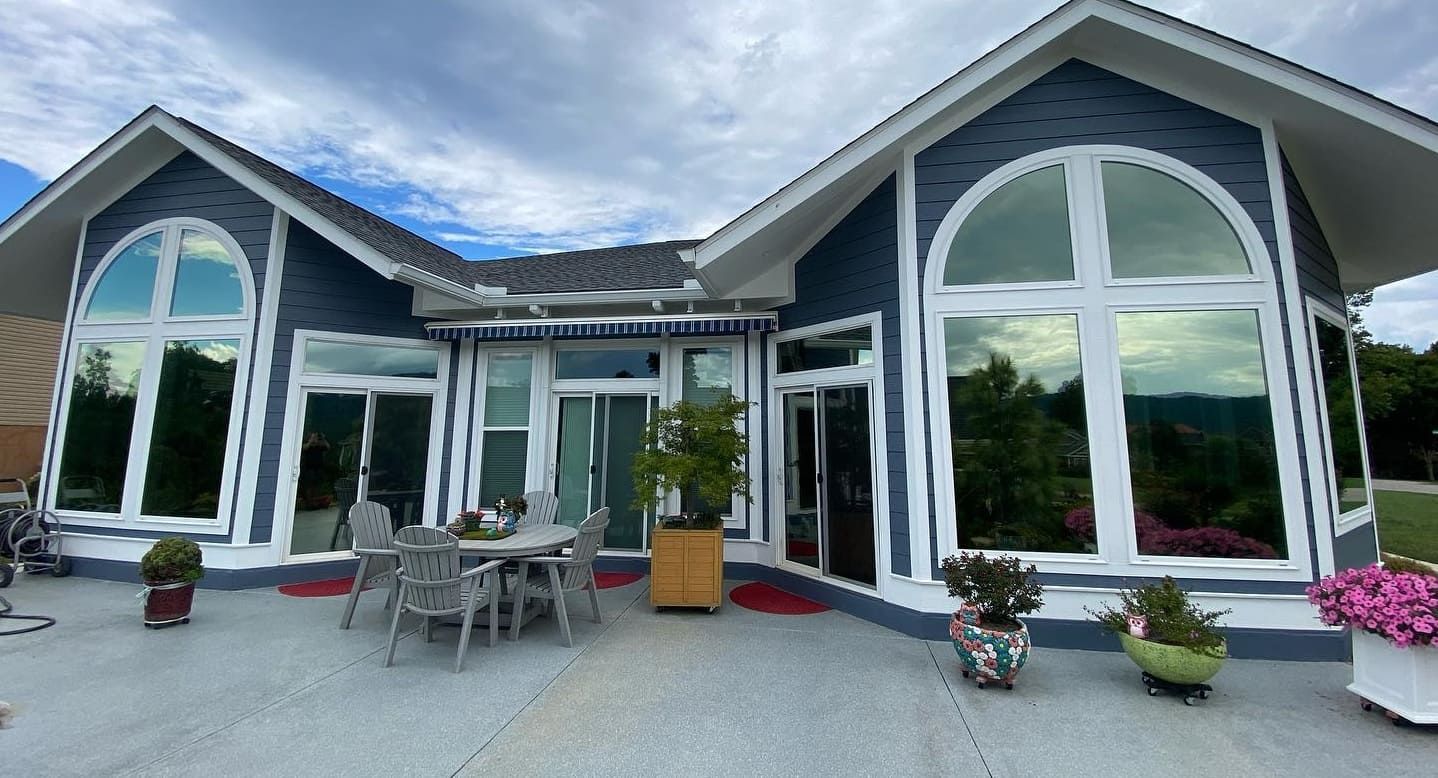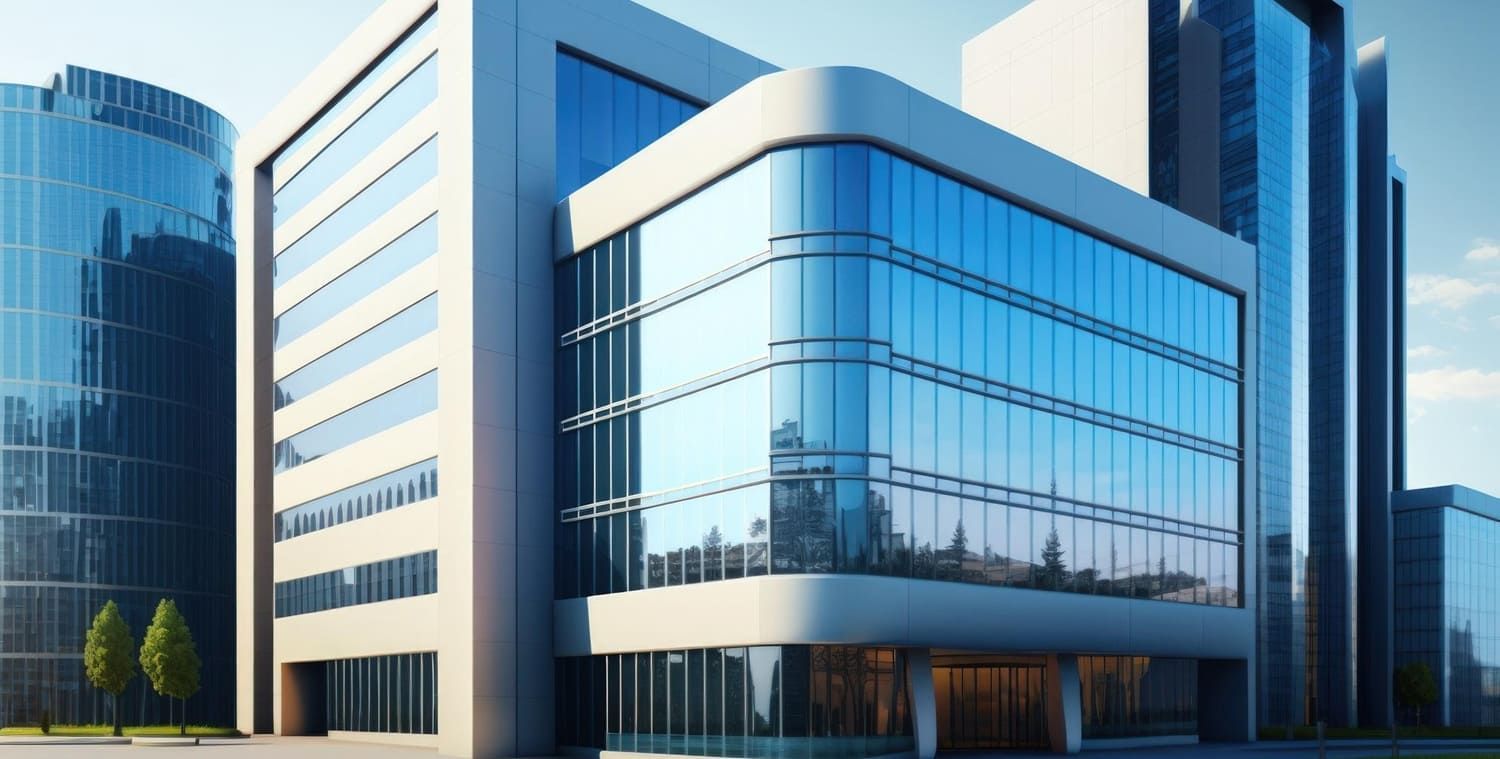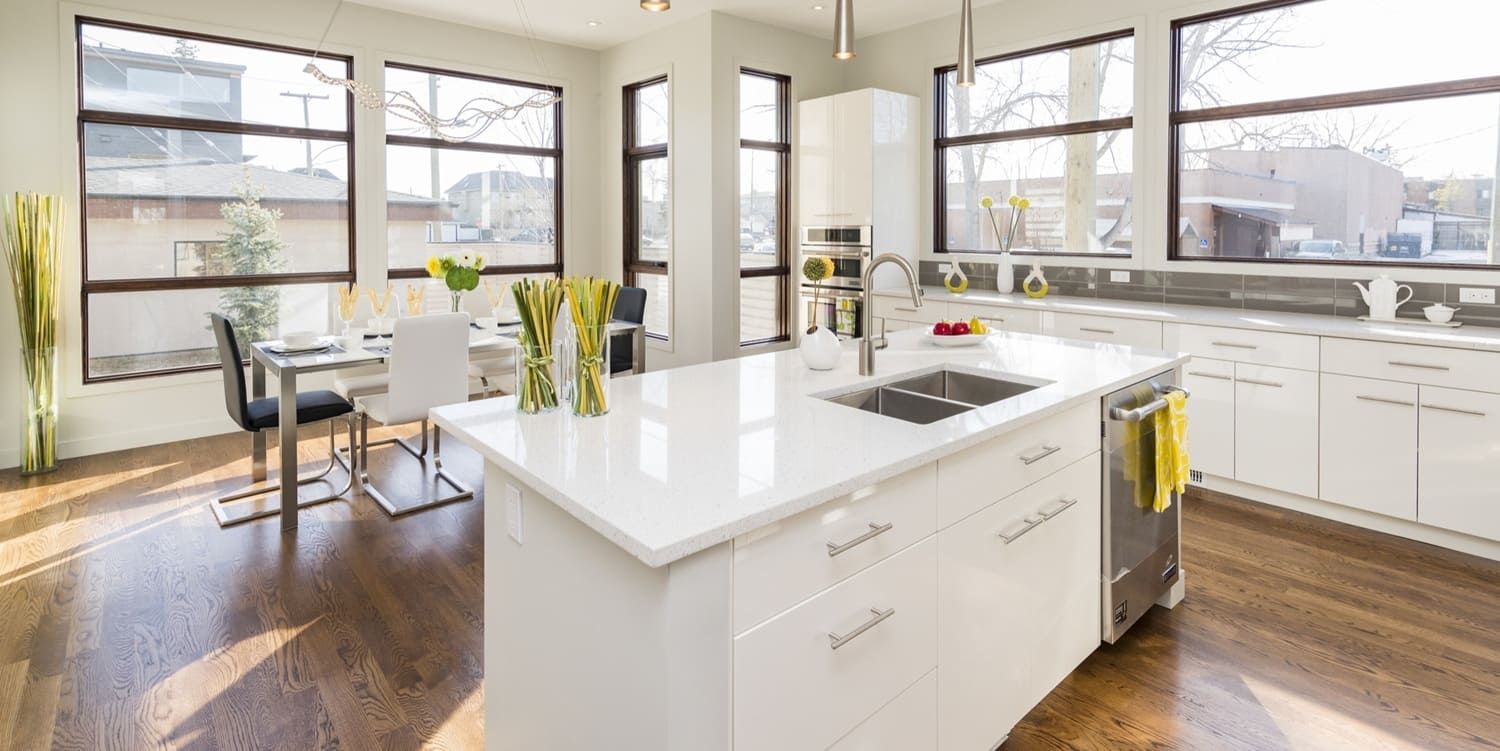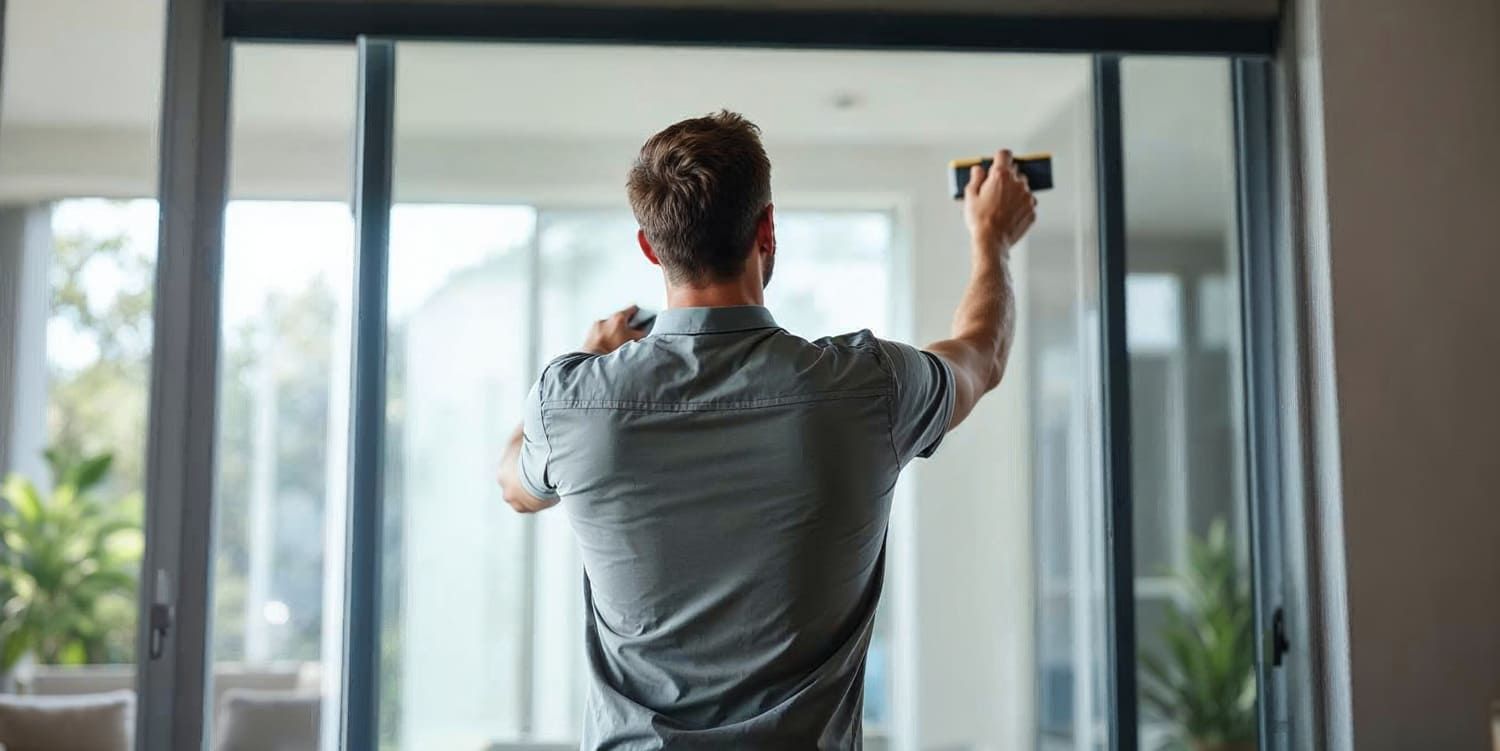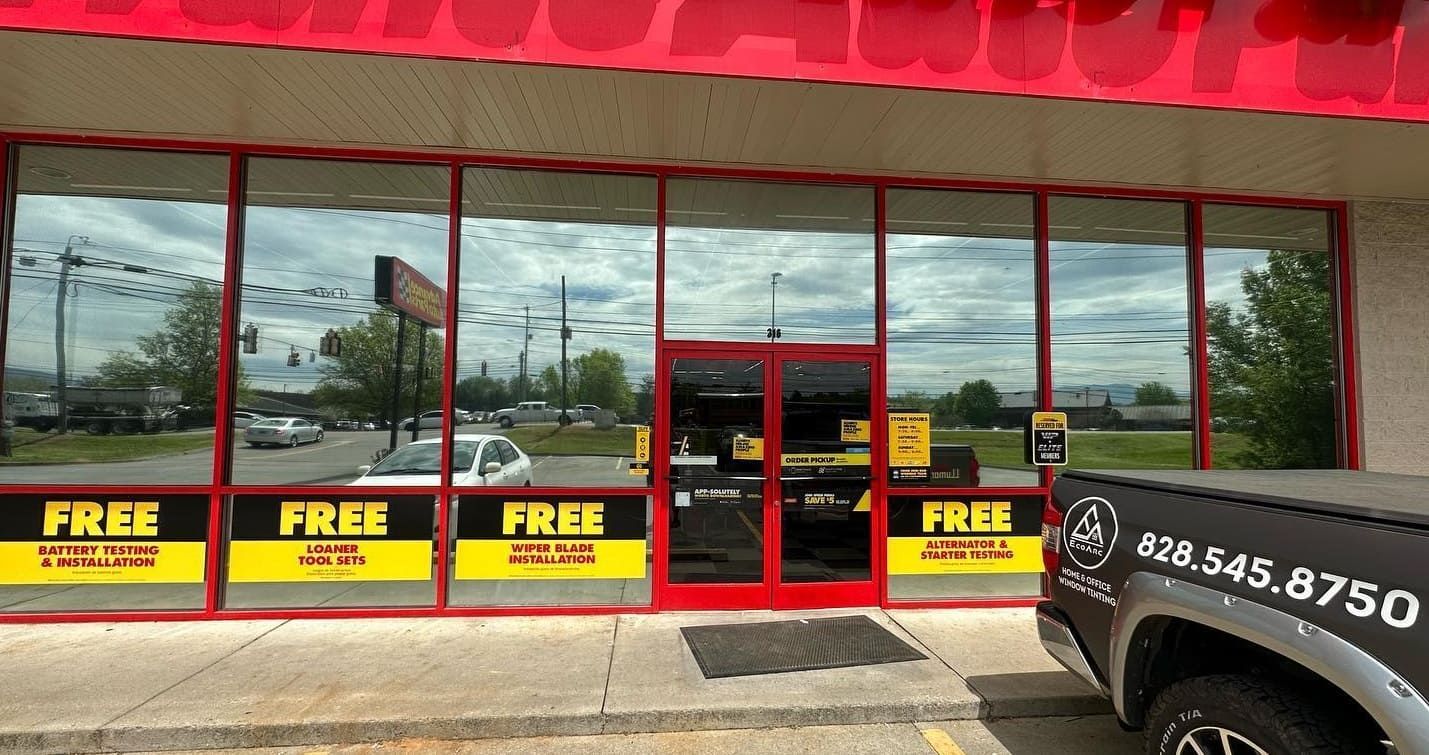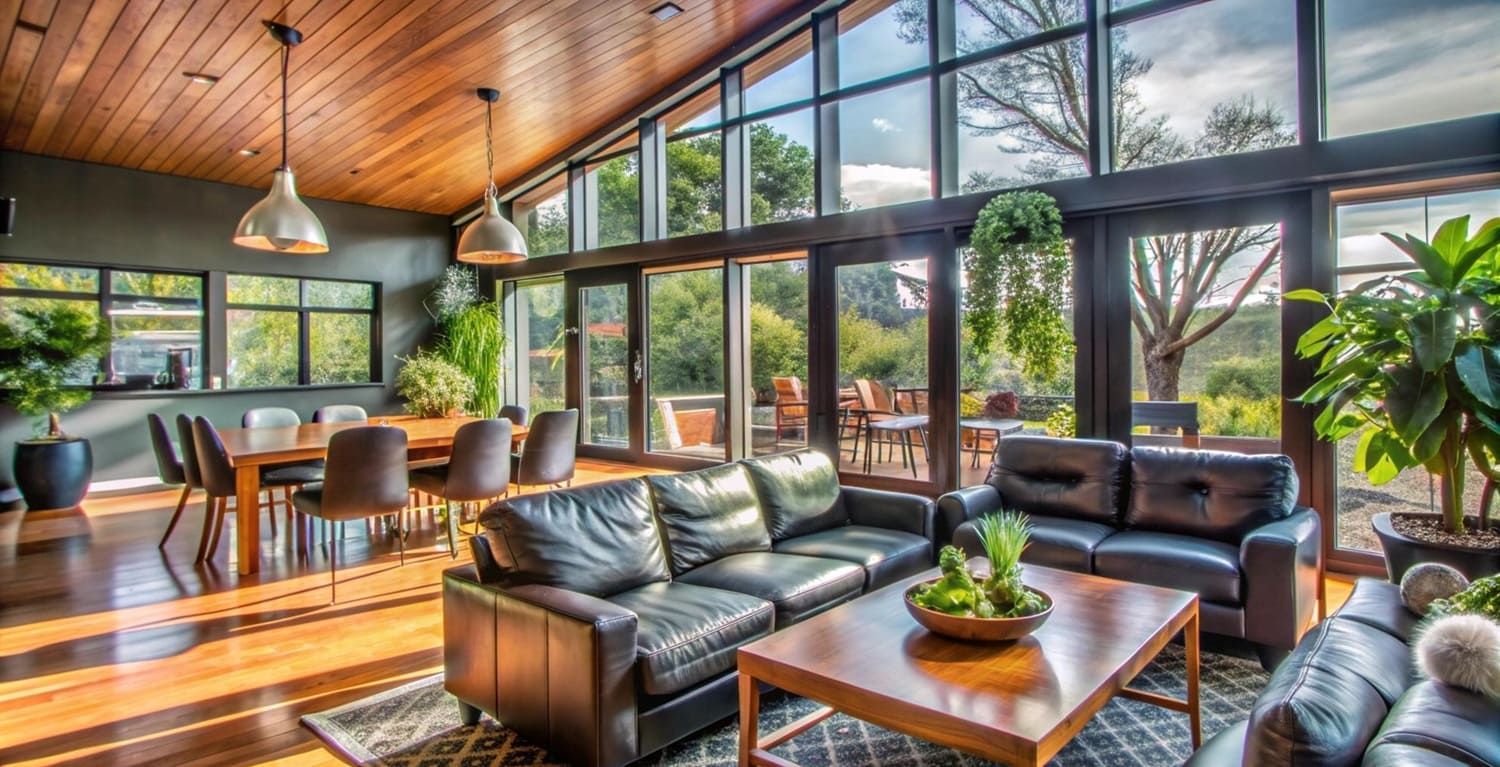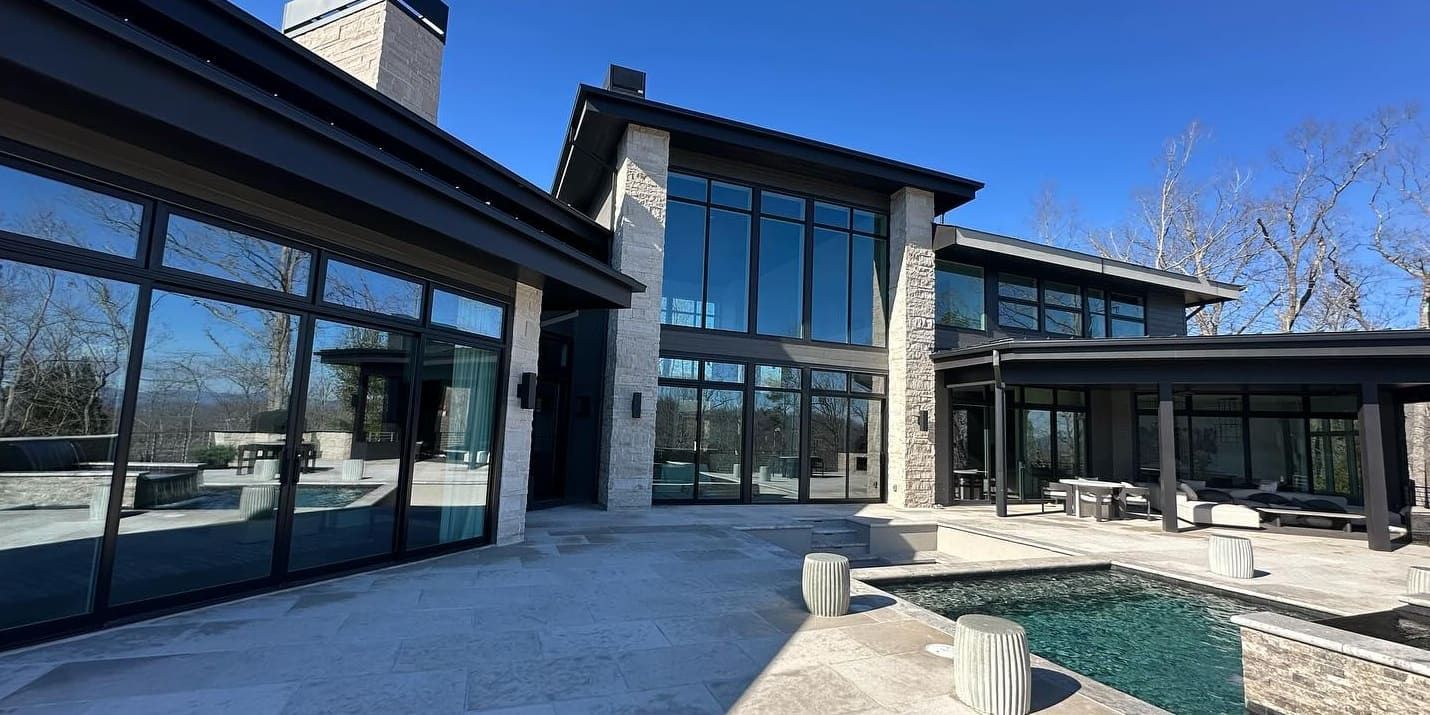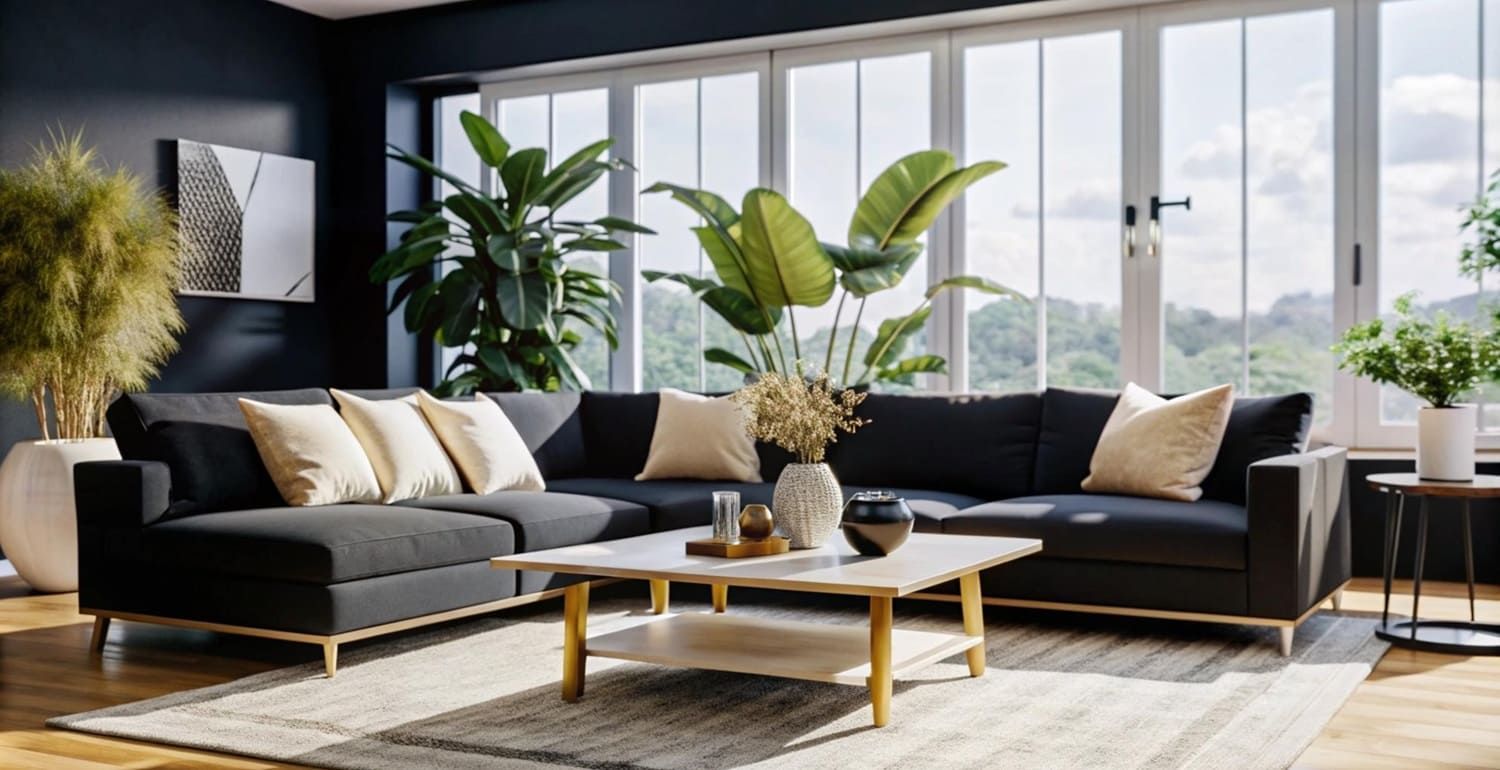Smart Window Films for Brighter, More Productive Offices
Is your office battling harsh sunlight, leading to squinting, overheating, and a dip in productivity? Window film for offices is your proven ally, expertly filtering intense light while keeping your views crystal clear. This guide will unveil how the right office glare reduction film transforms your workspace, boosting comfort, slashing energy costs, and extending the life of your equipment. We’ll dive into the best film choices, installation strategies and costs, essential maintenance tips, cutting-edge smart tints, and where to find dependable solutions across Western North Carolina, East Tennessee, and Upstate South Carolina. Keep reading to discover:
- Top-tier window films and their standout features
- Smart ways to minimize screen reflections
- Installation options, pricing insights, and trusted providers
- Bonus benefits like UV defense, privacy, and design flair
- Easy care routines and troubleshooting advice
- The latest in glare control technology
- Recommended brands and earth-friendly choices
Understanding these key elements empowers you, whether you're a homeowner or business owner, to choose the perfect office window film that enhances your work environment and saves you money.

What Are the Top Window Films for Banishing Office Glare?
High-performance office glare reduction films masterfully blend optical clarity with solar control, blocking up to 80% of visible light and an impressive 99% of UV rays. These specialized coatings dial down brightness without making your interiors feel dim, making them a perfect fit for today's dynamic workspaces.
How Does Commercial Glare Reduction Film Elevate Office Comfort?
Commercial glare reduction film works by scattering solar radiation and absorbing infrared heat, effectively taming harsh light. This clever mechanism prevents scorching hot spots near windows, stabilizes interior temperatures, and eases eye strain caused by distracting screen glare.
How Window Films Enhance Indoor Comfort and Cut Glare
- Research confirms that applying reflective window films significantly lowers both indoor temperatures and light levels, leading to a much more comfortable office environment. This reduction in light intensity is key to combating glare, which often causes eye fatigue and hampers productivity.
- This study validates our point: anti-glare window tints truly boost office comfort by softening harsh light and moderating indoor temperatures, directly addressing the illuminance reduction that’s crucial for effective glare control.
What Key Features Should You Seek in Office Anti-Glare Window Tint?
When choosing your anti-glare window tint, focus on these essentials:
- Visible Light Transmission (VLT) – Aim for a VLT between 35–60% to balance glare reduction with ample natural light.
- Solar Heat Gain Coefficient (SHGC) – A lower SHGC (under 0.30) means superior heat rejection.
- UV Rejection – Films blocking up to 99% of UV rays protect your furnishings and your team's skin.
- Neutral Coloration – Look for silver or gray tints that maintain the true colors of natural daylight.
- Warranty Coverage – A solid warranty of at least 10 years against bubbling, peeling, or fading is a must.
These criteria ensure you get a durable solution that enhances comfort without sacrificing your office's look and feel.
Which Office Window Films Excel at Glare Control?
Here’s a breakdown of popular glare reduction film types, their performance highlights, and where they shine.
| Film Type | Light Control | Heat Rejection | Best For |
|---|---|---|---|
| Spectrally Selective | 50–65% VLT | 60–75% | Glass facades facing sunny directions |
| Ceramic Nano-Coating | 40–55% VLT | 65–80% | Corner offices and high-glare spots |
| Reflective Metalized | 25–40% VLT | 50–70% | Industrial settings needing maximum shade |
How to Pick the Perfect Window Film for Your Office Space?
Your choice should hinge on:
- Window Orientation: South and west-facing windows require more robust heat rejection.
- Office Layout: Open-plan areas benefit from higher VLT to spread daylight evenly.
- Occupancy Needs: Conference rooms used for presentations need minimal screen glare.
- Budget and ROI: Factor in energy savings versus initial costs to project a payback period of 3–5 years.
This strategic approach ensures the film's features align perfectly with your office's architecture and daily operations, delivering optimal glare control and cost-effectiveness.
How Can Office Window Films Tame Computer Screen Glare?
Anti-glare window films are your first line of defense against direct sunlight bouncing off monitors, making screens easier to see and improving everyone's well-being.
What Causes Annoying Computer Screen Glare in Offices?
Screen glare happens when direct sunlight or bright reflections from the sky hit your display. High ambient light creates harsh reflections, washing out contrast and forcing your eyes to work overtime, leading to fatigue and headaches.
How Do Anti-Glare Window Tints Reduce Screen Reflections?
These tints use micro-textured coatings to diffuse incoming sunlight, scattering rays instead of bouncing them back as blinding beams. This clever trick lets in natural light while significantly reducing the harshness on your screen, making it much easier to read.
What Are the Best Ways to Pair Window Film with Screen Placement?
Achieving perfect glare reduction means combining film with smart ergonomic setup:
- Position monitors at a right angle to windows.
- Use adjustable blinds in conjunction with your window film.
- Set up workstations at least 2–3 feet away from untreated glass.
This combined strategy creates consistently comfortable, low-glare work zones throughout the day.
Can Window Films Actually Boost Employee Productivity by Cutting Glare?
Absolutely! Reducing glare enhances visual comfort, which directly translates to better focus and fewer mistakes. Studies show a noticeable 10–15% jump in task performance when screen reflections are minimized, proving a clear link between glare management and workplace output.
What Are the Installation Options and Costs for Commercial Glare Reduction Films?
Installing office window film can range from a simple DIY project to a full professional service, with costs influenced by the film's quality, window size, and installation complexity.
How Is Office Window Film Installed for Peak Glare Reduction?
Professional installers follow a meticulous process:
- Surface Prep – A thorough cleaning removes every speck of dust and oil.
- Precise Cutting – Films are trimmed to perfectly match your glass dimensions.
- Wet Application – A special solution allows for easy repositioning before the film sets.
- Squeegee Seal – All air bubbles are expertly removed, and edges are sealed tight.
A flawless installation guarantees a bubble-free finish and the best possible glare control performance.
What's the Typical Price Tag for Office Anti-Glare Window Tint?
Expect project costs to generally fall within these ranges:
- Basic DIY Film: $3–$6 per sq. ft.
- Mid-Range Professional Grade: $8–$12 per sq. ft.
- Premium Ceramic and Spectrally Selective Films: $12–$18 per sq. ft.
Labor rates vary by location. In the Western NC and surrounding areas, professional installation typically runs $2–$4 per sq. ft.
Are There Pro Services for Installing Commercial Glare Reduction Film?
Yes, local certified installers offer comprehensive services, including on-site measurements, expert product recommendations, and post-installation checks. EcoArc Home & Office Window Tinting provides complimentary consultations and detailed shading analyses to craft the ideal film solutions for offices in Asheville, Knoxville, and Greenville.
How Long Does Office Window Film Last, and When Does It Need Replacing?
High-quality films typically perform brilliantly for 10–15 years. Signs it’s time for a change include peeling edges, discoloration, or a noticeable drop in heat rejection. An annual inspection can help spot aging film before it affects glare control and energy savings.
What Other Perks Come with Glare Reduction Films in Offices?
Beyond just taming glare, office films deliver significant advantages in energy savings, UV protection, privacy, and overall aesthetics.
How Do Window Films Boost Energy Efficiency and UV Protection?
Window films cut down on HVAC use by blocking up to 80% of solar heat gain, potentially lowering cooling costs by 5–15%. They also filter out 99% of harmful UV rays, preventing furniture fading and protecting your team's skin.
Window Films' Impact on Thermo-Solar Properties and Office Energy Use
- Academic studies confirm that window films are highly effective at blocking over 76% of solar heat and around 99% of UV rays, especially during warmer months. Research also shows that reflective window films can lead to substantial savings on air conditioning costs, with annual cooling energy consumption reductions of up to 35%, depending on the building's orientation and the film type used.
- This research strongly supports our claims about the significant energy efficiency and UV protection benefits that office window films provide.
Can Glare Reduction Films Enhance Office Privacy and Security?
Yes, reflective and frosted films can obscure interior views after dark, protecting sensitive areas. Security films add a robust layer that holds shattered glass together, minimizing injury risks and deterring potential break-ins.
What Effect Do Window Films Have on Office Appearance and Natural Light?
Neutral-toned films maintain the true colors of natural daylight while giving your building's facade a sleek, uniform look. By reducing glare without making interiors too dark, these films keep the space feeling open and inviting, enhancing occupant comfort and design harmony.
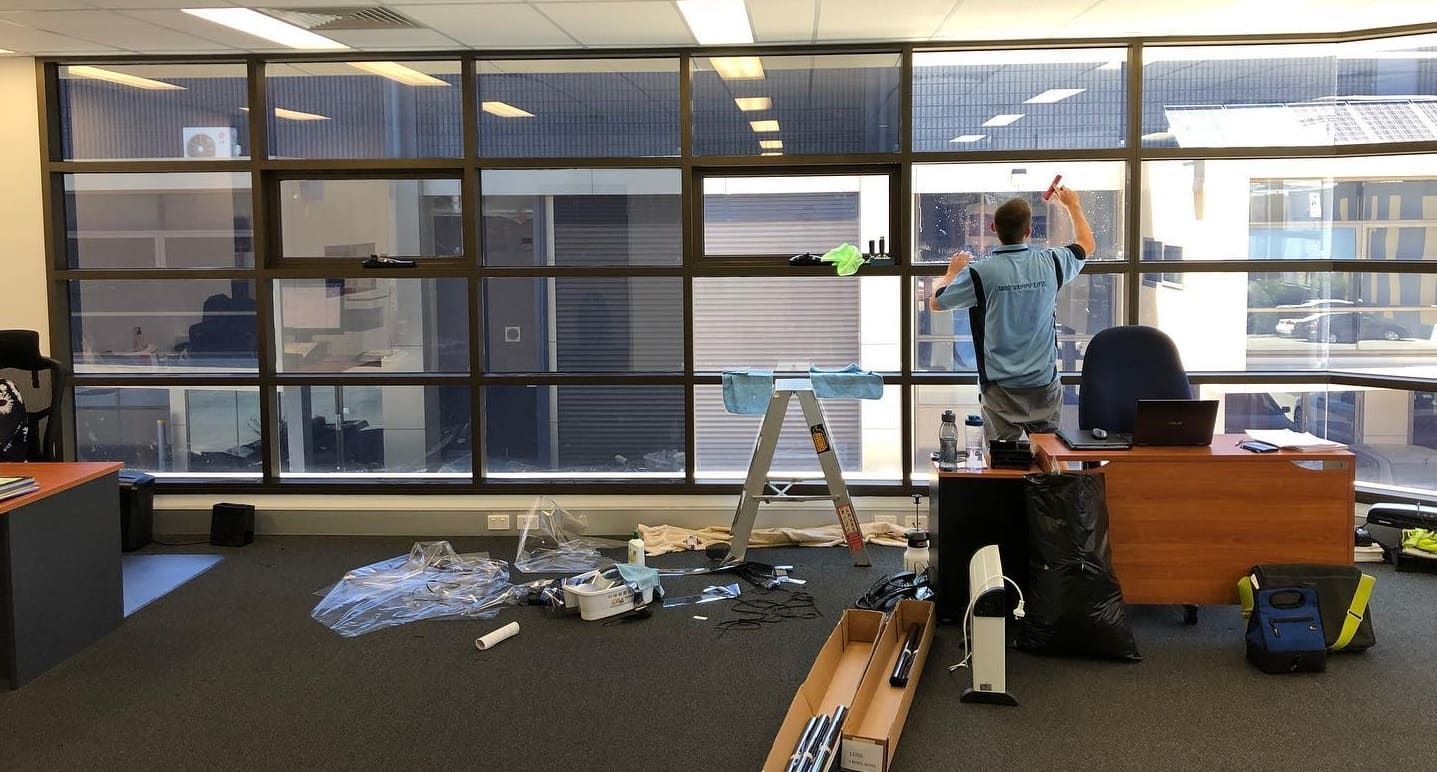
How to Keep Your Office Anti-Glare Window Films in Top Shape?
Proper care will extend your film's lifespan and ensure it continues to perform flawlessly.
What Cleaning Methods Are Safe for Office Window Films?
Use a gentle, ammonia-free cleaner and a soft microfiber cloth to easily wipe away dust and smudges. Steer clear of abrasive tools or harsh chemicals that could scratch or damage the film's surface.
How to Spot and Fix Common Glare Reduction Film Issues?
Keep an eye out for peeling edges, spots, or a hazy appearance. Minor edge lifts can often be resealed with clear silicone, but widespread bubbling usually means moisture has gotten underneath and will require professional attention or replacement.
When Should You Book Professional Maintenance for Your Window Films?
Schedule a check-up twice a year to confirm the film is adhering well, check for any UV-induced fading, and ensure it's still performing optimally. Regular maintenance prevents small issues from becoming costly problems.
What's New in Glare Reduction Technology for Offices?
Cutting-edge materials and smart systems are revolutionizing office glare control with dynamic light management and advanced comfort features.
How Are Smart Window Films Revolutionizing Office Glare Control?
Smart films utilize electrochromic or thermochromic technology to adjust their tint level on command. With a simple switch or automated sensors, these films can shift from clear to shaded in seconds, offering instant glare management and energy savings.
What Novel Materials Are Used in Advanced Commercial Glare Reduction Films?
Nanotechnology-infused ceramics and multi-layer polymer laminates offer incredibly thin profiles with exceptional heat rejection. These advanced composites maintain high VLT while effectively blocking infrared energy, making them ideal for large glass curtain walls.
How Do These Innovations Enhance User Comfort and Energy Savings?
By precisely controlling solar heat and glare, smart films maintain stable interior temperatures and consistent light levels. This fine-tuned regulation reduces the workload on your HVAC system and stabilizes natural light, creating a more comfortable and productive atmosphere.
Where Can You Find Dependable Office Window Films for Glare Reduction?
Choosing a reputable supplier guarantees you'll receive authentic products, solid warranties, and ongoing support.
Who Are the Top Brands for Commercial Glare Reduction Films?
Leading manufacturers offer premium lines featuring ceramic nanocoatings, spectrally selective layers, and extended warranties. EcoArc Home & Office Window Tinting partners with trusted suppliers to provide certified, high-performance films you can count on.
How to Confirm Quality and Warranty When Buying Window Films?
Ensure films carry ISO 9001 manufacturing certification and ask for a warranty of at least 10 years covering fading, cracking, and adhesive failure. Request material data sheets to compare performance metrics and results from endurance testing.
Are There Eco-Friendly Choices for Office Window Films?
Absolutely! Water-based adhesives and low-VOC coatings can contribute to LEED credits for indoor environmental quality. Some films even incorporate recycled PET layers, further reducing the environmental impact of your glazing upgrades.
Installing the right office window film is your key to conquering glare, boosting energy efficiency, and creating a more comfortable workspace. By following these tips—from selecting the best film types to ensuring long-term performance—you'll craft a productive, sustainable work environment that truly stands the test of time.

